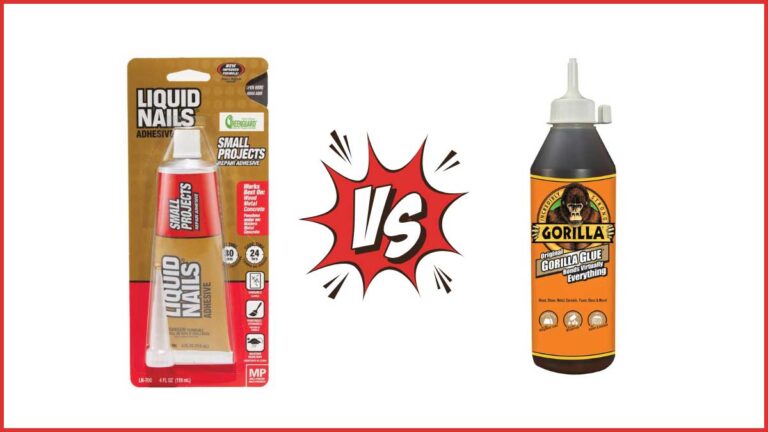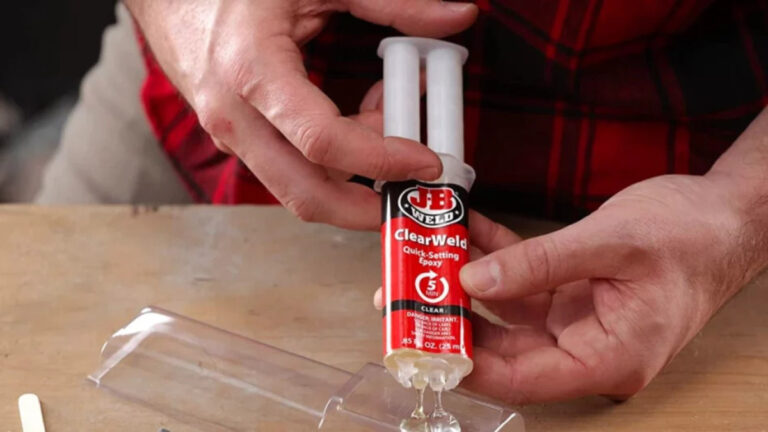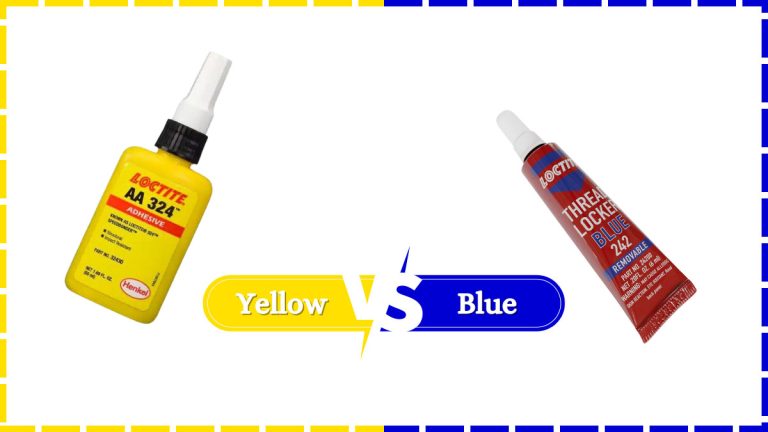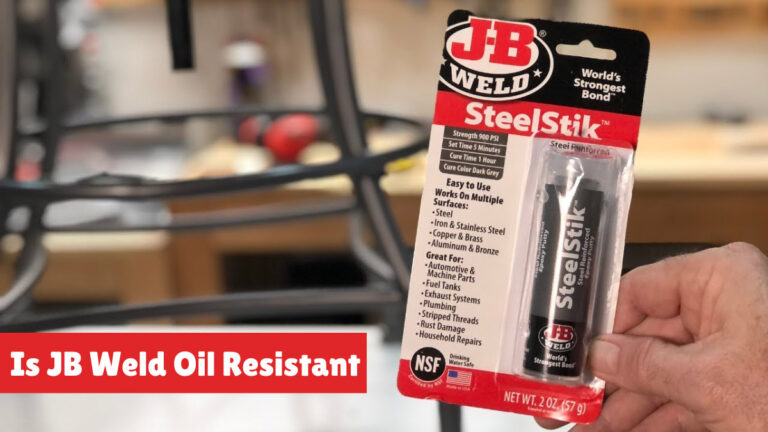How to Use Silicone Sealant Without Gun: DIY Guide and Tips
Ever found yourself in the middle of a DIY project only to realize you don’t have a caulking gun? Don’t worry, you’re not alone. Many home improvement enthusiasts face this challenge, but the good news is you can still achieve professional results using silicone sealant without a gun.
Whether you’re sealing a bathroom sink or fixing a drafty window, learning how to apply silicone sealant manually can save you time and money. With the right techniques and a bit of patience, you’ll be able to tackle those sealing tasks like a pro. Let’s jump into the simple steps you can follow to get the job done efficiently.
Key Takeaways
- Manual Application Possible: Applying silicone sealant without a caulking gun is entirely feasible with the right techniques and tools.
- Preparation is Key: Properly preparing the tube by cutting the tip at a 45° angle and piercing any seals ensures a smooth application.
- Consistent Pressure: Using steady pressure when squeezing the tube results in an even, professional-quality bead of sealant.
- Smoothing Techniques: Dampen your finger or a smoothing tool with soapy water to prevent sticking and achieve a neat finish.
- Temperature and Cleanliness: Ensure the working environment is between 50°F and 90°F and keep surfaces clean and dry for optimal adhesion.
- Effective Cleanup: Promptly clean any excess sealant with disposable cloths and solvents like rubbing alcohol or white vinegar to maintain a tidy workspace.
Can You Use Silicone Sealant Without a Gun?
Yes, you can use silicone sealant without a caulking gun. It might require extra effort and precision, but it’s entirely possible to achieve a clean and professional finish. Below are detailed steps and tips to guide you through the process.
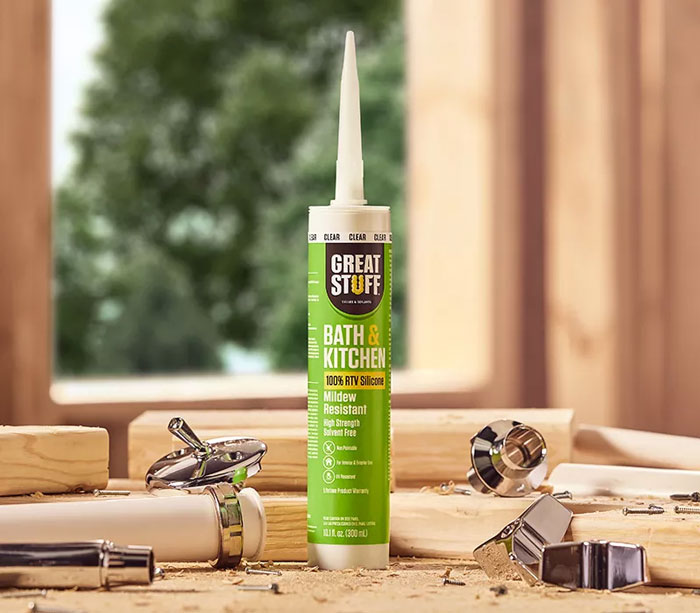
Preparing the Tube
- Opening the Tube: If the silicone sealant comes with a sealed tip, cut the tip at a 45° angle using a utility knife or razor. For a tube with a metal disc or seal, pierce it with a long nail or metal bit.
Applying the Sealant
- Firm Grip: Hold the tube firmly and squeeze from the bottom to dispense the sealant. Alternatively, a wooden paint stir stick can help press out the sealant.
- Consistent Speed: Apply the sealant along the joint or surface to be sealed, maintaining a steady pace to ensure an even bead.
Smoothing the Sealant
- Dampening Method: Dampen your finger or a smoothing tool with soapy water. This prevents the sealant from sticking to your skin or the tool.
Additional Tips
- Temperature Consideration: Ensure the working area is at an optimal temperature, preferably between 50°F and 90°F.
- Clean Surface: The application area should be clean and dry for better adhesion.
- Disposable Gloves: Wear disposable gloves to keep your hands clean during the application process.
| Step | Tool/Item Needed | Purpose |
|---|---|---|
| Open the Tube | Utility knife, Long nail | Cut the tip or pierce the metal seal |
| Dispense Sealant | Firm grip, Wooden stir stick | Squeeze sealant out evenly |
| Smooth Sealant | Finger, Smoothing tool | Achieve a professional finish |
| Additional Tips | Disposable gloves, Soap water | Ensure cleanliness and ease of work |
Working without a caulking gun allows you to be resourceful and adaptable in various sealing tasks. Follow these steps and tips to efficiently use silicone sealant while ensuring a professional outcome.
Different Methods to Apply Silicone Sealant Without a Gun
Several methods provide viable alternatives to using a caulking gun for silicone sealant application, each with its benefits and considerations.
Using Squeeze Tubes
Description: Squeeze tubes offer one of the simplest ways to apply silicone sealant without a gun. These tubes are designed for easy hand operation, resembling toothpaste tubes, allowing direct application onto surfaces.
Advantages:
- Ease of Use: Ideal for small projects that don’t require extensive tools.
- Portability: Convenient to use on-the-go for various sealing tasks.
- Control: Offers better control for precise application in tight or intricate spaces.
Considerations:
- Consistency: The sealant bead may not be as uniform compared to a caulking gun.
- Cleanup: Might require extra cleanup to achieve a smooth finish.
Manual Application
Description: This method involves manually applying pressure to the silicone sealant tube to dispense the product. It’s a straightforward yet effective approach when a caulking gun isn’t available.
Advantages:
- Flexibility: Suitable for a variety of surfaces and sealant types.
- Adaptability: Allows you to adjust pressure based on the needed width and volume of the sealant bead.
Considerations:
- Effort: Requires more physical effort and precision.
- Control: May be challenging to control the flow rate and bead size consistently.
Plastic Bag Method
Description: Utilizing a plastic bag to apply silicone sealant is a creative and practical method. You fill a sturdy plastic bag with the sealant, cut a small hole in one corner, and use it as an improvised piping bag.
Advantages:
- Cost-Effective: Uses readily available household items.
- Customization: Allows you to cut the hole to your desired size for varying bead widths.
Considerations:
- Mess: Potentially messier compared to other methods, requiring cautious handling.
- Durability: The bag may break if too much pressure is applied.
Summary
Without a caulking gun, applying silicone sealant remains achievable through several effective methods. By choosing the right method based on the task’s scale and complexity, you can ensure clean, professional results.
Step-by-Step Guide to Applying Silicone Sealant Without a Gun
Applying silicone sealant without a caulking gun is practical and achievable for various sealing tasks. Follow the steps below for a smooth, professional finish.
Step 1: Preparation and Cutting the Nozzle
Remove Old Sealant:
- Clean the area for the new sealant.
- Use soap, water, or a cleaning agent.
- Ensure the area is thoroughly dry.
Cut the Nozzle:
- Cut the tip of the silicone sealant tube at a 45° angle.
- Use a utility knife or a razor for precision.
- The angled cut helps achieve a smooth bead of sealant.
Step 2: Applying the Sealant
Prepare the Tube:
- Pierce the sealed nozzle if needed.
- A long nail or metal bit is effective for breaking the seal.
Dispense Sealant:
- Hold the tube with one hand.
- Squeeze the bottom to dispense the sealant.
- Apply uniformly along the joint or area that needs sealing.
- Curl the end of the tube to force the sealant towards the tip if it’s hard to squeeze.
Step 3: Smoothing the Sealant
Smooth the Bead:
- Use a dampened finger or tool.
- Maintain consistent pressure for an even finish.
- Clean excess sealant with a cloth.
Final Check:
- Inspect the sealed area for gaps.
- Repeat application if necessary for consistent coverage.
Tools and Supplies
| Item | Purpose |
|---|---|
| Utility Knife/Razor | Cutting the nozzle at a 45° angle |
| Cleaning Agent | Removing old sealant and dirt |
| Long Nail/Metal Bit | Piercing the seal on the tube’s nozzle |
| Damp Cloth | Smoothing the seal and cleaning excess sealant |
- Work in Optimal Temperatures: Ensure the working environment is at a moderate temperature.
- Use Disposable Gloves: Keep your hands clean while applying sealant.
- Maintain Steady Pressure: Achieve a uniform bead by applying consistent pressure when dispensing sealant.
By following these steps, you can successfully apply silicone sealant without a caulking gun, creating a professional finish while saving time and money.
Tips for a Smooth Application
Using silicone sealant without a caulking gun may seem tricky, but these tips ensure a smooth, professional finish.
Prepare the Tube
- Cut the Tip: Cut the tip of the tube at a 45° angle with a utility knife or razor. This angle helps in achieving an even bead.
- Pierce the Seal: If the tube has a metal seal, pierce it with a long nail or metal bit for smooth flow.
Apply the Sealant
- Consistent Pressure: Squeeze the bottom of the tube with steady pressure for an even flow. Apply from one end to the other in one continuous motion.
- Control the Flow: Curl the end of the tube to guide the sealant more accurately. This helps especially with intricate applications.
Smooth the Sealant
- Use Water: Dip your finger in water or soapy water to smooth the bead. This prevents sticking and results in a clean finish.
- Shape the Bead: Run your dampened finger along the sealant line to shape it evenly. Consistent pressure ensures a uniform bead.
Clean Up
- Immediate Actions: Clean excess sealant promptly with a rag before it cures. Silicone hardens quickly and is difficult to remove once set.
- Protective Gear: Wear disposable gloves to keep your hands clean and unencumbered during the process.
Environmental Conditions
- Optimal Temperature: Apply the sealant at room temperature, around 60°F to 80°F (15°C to 27°C). This ensures the silicone spreads and cures correctly.
- Dry Surfaces: Ensure the surface is dry and free of dust and oil to enhance adhesion.
Additional Tips
Check Expiry Dates: Silicone sealant loses effectiveness past its expiration date. Always check before use.
Ventilation: Work in a well-ventilated area to avoid inhaling fumes.
Here’s a quick reference table for essential items and their usage:
| Item | Usage |
|---|---|
| Utility Knife/Razor | Cutting the tube tip |
| Long Nail/Metal Bit | Piercing the metal seal |
| Water/Soapy Water | Smoothing the sealant |
| Rag | Cleaning excess sealant |
| Disposable Gloves | Keeping hands clean |
By following these steps, you can apply silicone sealant effectively without a caulking gun. The key lies in preparation, controlled application, and proper cleanup to achieve a professional result.
Cleaning Up After Application
Cleaning up after applying silicone sealant without a caulking gun is essential for a professional finish. Act promptly to prevent a sticky residue from setting or hardening.
Immediate Cleanup
- Remove Excess Sealant: Wipe away excess sealant with a paper towel or disposable cloth. Perform this task right after applying the sealant to avoid difficulty in removal later.
- Use a Solvent: For stubborn residue, use a solvent such as rubbing alcohol or white vinegar. Dampen a cloth with the solvent and gently rub the affected area.
Tools for Cleanup
- Paper Towels: Effective for absorbing and removing fresh sealant.
- Disposable Cloths: Suitable for larger clean-up tasks.
- Solvent Cloths: Specialized cloths pre-soaked in solvents for easy removal of dried sealant.
Disposal of Waste
- Contain and Seal: Place used cloths and paper towels in a sealable plastic bag to contain any remaining sealant.
- Follow Local Regulations: Dispose of the sealed bag according to local waste disposal regulations to ensure environmental safety.
Examples of Solvents
| Solvent | Effectiveness | Usage Conditions |
|---|---|---|
| Rubbing Alcohol | High, for fresh sealant | Best on non-porous surfaces |
| White Vinegar | Moderate, for residue | Suitable for most surfaces |
| Paint Thinner | High, for stubborn sealant | Use in well-ventilated areas |
Summary
Immediate and effective cleanup ensures a neat finish and prevents long-term maintenance issues. Properly dispose of waste materials and use the correct solvents to maintain clean work areas.
Conclusion
Applying silicone sealant without a caulking gun might seem daunting at first, but with the right techniques and tools, you can achieve professional results. By following the detailed steps and tips provided, you’ll be able to handle various sealing tasks efficiently and effectively.
Remember to prepare your work area, maintain consistent pressure while applying the sealant, and smooth it out for a clean finish. With a bit of practice and patience, you’ll find that using silicone sealant manually can be just as effective as using a caulking gun.
Embrace the flexibility and adaptability of these methods, and you’ll save both time and money on your DIY projects. Happy sealing!
Frequently Asked Questions
Can I apply silicone sealant without a caulking gun?
Yes, you can apply silicone sealant without a caulking gun using methods like squeeze tubes, manual application, or even a plastic bag. Each method requires precision and some extra effort but can yield professional results.
What alternatives can I use instead of a caulking gun?
You can use squeeze tubes, which are user-friendly for small projects, or manual application tools such as a putty knife or even your finger. The plastic bag method is also a cost-effective and customizable option.
How do I prepare the silicone sealant tube for manual application?
Cut the nozzle of the silicone sealant tube at a 45° angle to ensure a smooth bead. You may also need to pierce the seal inside the tube using a long nail or similar tool.
What techniques help to apply silicone sealant manually?
Apply steady pressure on the tube and move it at a consistent speed while manually dispensing the sealant. Smoothing out the sealant with a dampened finger or tool ensures a clean finish.
Are there tips for achieving a clean finish when applying sealant without a gun?
Yes, work in optimal temperatures, ensure the surface is clean, and wear disposable gloves for hygiene. Using water to smooth the sealant also helps in achieving a professional look.
How do I smooth silicone sealant after application?
You can smooth silicone sealant using a dampened finger or a smoothing tool. Run your finger or tool along the bead with even pressure to distribute the sealant uniformly.
What precautions should I take while applying silicone sealant?
Check the expiration date of the sealant, work in optimal temperature conditions, and ensure the area is well-ventilated. Additionally, clean the surface before application and wear gloves for cleanliness.
What is the best way to clean up excess silicone sealant?
Clean up excess silicone sealant promptly using paper towels or disposable cloths. For stubborn residue, you can use solvents like rubbing alcohol or white vinegar.
Will silicone sealant stick to itself?
No, silicone sealant does not stick to itself. Once cured, new silicone will not adhere well to old silicone, so it’s essential to remove any old sealant before applying new layers.
How do I ensure a professional result when applying sealant manually?
Follow the step-by-step guide involving preparation, controlled application, and smoothing techniques. Immediate cleanup and attention to environmental conditions also play a significant role in achieving a professional finish.

